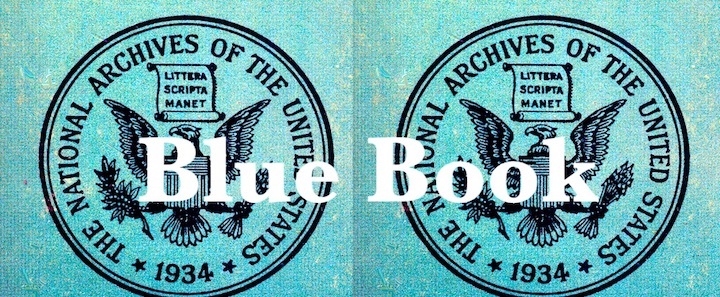
The 701 club: Case 7359: PacifiC april 24, 1961
Don Berlinner’s describes the case as follows:
April 24, 1961; 200 miles SW of San Francisco, California (35’ 50’ N., 125’ 40 W.). 3:34 a.m. Witnesses: aircraft commander Capt. H.J. Savoy and navigator lst Lt. M.W. Rand, on USAF RC-l2lD patrol plane. One reddish-white, round object or light, similar to satellite. Observed for 8 minutes.1
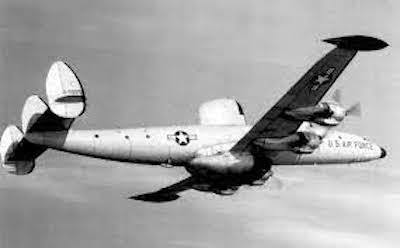
Brad Sparks states:
April 24, 1961. 200 miles SW of San Francisco, Calif. (35°50’ N, 125°40’ W). 3:34 a.m. (PST). 551st AEW&C Sq aircraft commander Capt. H. J. Savoy and navigator 1st Lt. M. W. Rand, on USAF RC-121D radar patrol plane at 11,000 ft saw reddish-white round object or light, similar to satellite or aircraft, angular size of pinhead at arm’s length, moving W to E, tracked through sextant from 29°55’ elevation 140° azimuth (SE) disappearing at the horizon at 50° (or 60° text barely legible) azimuth. No sound, no trail, weather clear, check for Echo satellite negative. (Sparks; Berliner; Jan Aldrich-NICAP; AFRHA index for 551st AEW&C Sq History)2
Everything associated with this sighting suggests a satellite but Project Blue Book checked and Echo was not making a pass over that region at this moment in time. Could it have been another satellite?
The Blue Book file
The Blue Book file does not contain very much. It only has a single message with these particulars3:
The aircraft was an RC-121 at 11,000 feet flying on a course of 140 degrees true at 180 knots.
The Navigator was taking a fix on the north star when he saw the object at 1134Z. He measured the objects initial elevation at 29 degrees 55 minutes and 140 degrees relative bearing. Relative bearing is the bearing relative to the motion of the aircraft. Since the aircraft’s motion was towards 140 degrees, the relative bearing would have been 140 degrees relative to that direction. This means the position would have been 280 degrees azimuth (not 140 as Sparks wrote). Most relative bearings are in a clockwise direction. However, it is possible that there was a mistake in reporting the relative bearing (as well as the elevation). This seems possible considering the fact that the navigator stated he was taking a fix on the north star when it was first observed.
The object was described as planet-like, round, the size of a pinhead, and reddish-white in color.
It disappeared on the horizon at 050 degrees true after 8 minutes (which would have been 1142Z). It was traveling from west to east.
Both observers (navigator and aircraft commander) stated the object looked like the Echo satellite.
The record card states that Blue Book checked with Space Track and they stated the Echo satellite was not visible.
Analysis
As I previously stated, the description sounds like a satellite was seen. However, Blue Book had stated that Space Track stated it was not the Echo satellite making me wonder if there might have been another satellite they did not check. While I was discussing this case with Herb Taylor, he suggested that I check the Echo satellite track just to make sure. I went to Jonathan’s space page and selected the Two Line Elements (TLEs) for April 25th, 19614:
1 00049U 60009 A 61115.51857470 .00000743 +00000-0 +00000-0 0 00499
2 00049 047.2599 170.2313 0354267 159.3353 201.4061 12.29239146031405
3 00049 1 NOR Earth JCMWWW/S00049
I then ran the numbers in Heavensat and discovered that Echo DID make a pass over the region for the time in question.
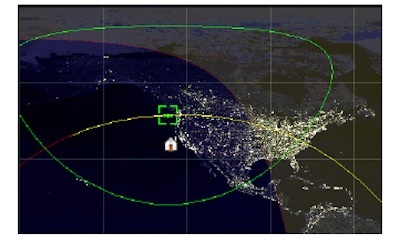
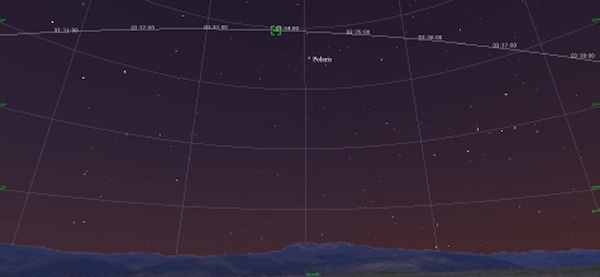
I was even more surprised to see that the Echo satellite pretty much matched the observations and it passed close to Polaris, which was the star the Navigator was using for a fix when he saw the object.
According to the computed track, the satellite came out of Earth’s shadow at azimuth 290 degrees azimuth and elevation 10 degrees. Its maximum altitude was above the north star at about elevation 40 degrees. This was around the time reported as initial observation (1134Z). The Echo satellite reached the horizon around azimuth 70 degrees at time 1144Z. There are some conflicts regarding the values in the single message and what we know from the track Heavensat computed. However, the track is close enough to what was reported to consider it a satisfactory match.

Worried that I made a mistake, I decided to run the same orbit on Heavensat for two other cases, where Space Track had determined it was the Echo satellite. That would have been April 26 and May 3. Both were pretty good matches. The only possible answers for the mistake on April 24th are that Space Track must have made an error in their calculation or the information exchange between Blue Book and them introduced some sort of data error. It is not that surprising that something like this could occur since it seems that some of these queries may have involved a telephone call, where a mistake could have been made. If it were a verbal communication, a mix-up in the details could have occurred resulting in a false negative.
If one wanted to be picky about the values in this plotted path, one could suggest that Echo doesn’t match and that there were two objects on parallel tracks. One being Echo and the other being an unidentified. That seems unlikely since both witnesses would have seen the Echo satellite and made note that there were two objects. Any minor differences in the track and that reported by the witness can be explained by observational error or minor errors in the TLEs or the program I am using.
Conclusion
To me this case is solved as the Echo satellite. There are some minor differences between what my track shows and what the observations were but they are not significant enough to doubt the explanation. This should be removed from the Blue Book unknowns as well as the Weinstein catalogue.
Quelle: SUNlite 2/2021
+++
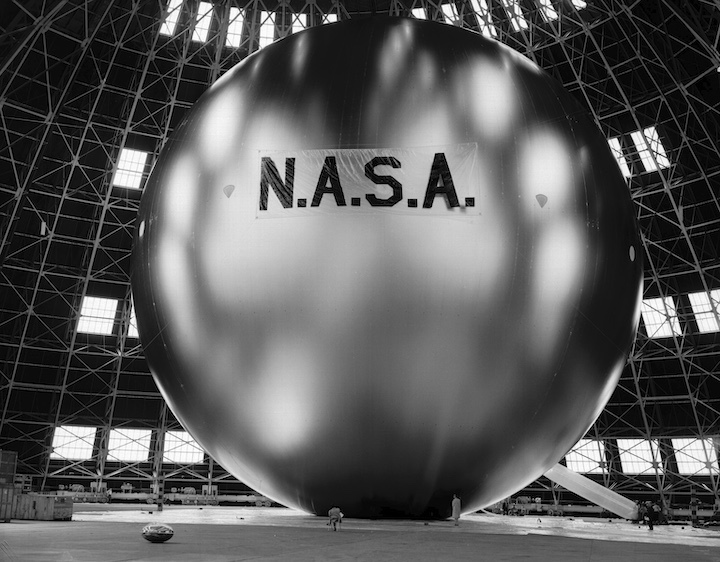
Sixty years ago this month, the United States successfully launched the Echo 1A passive communications satellite into Earth orbit. The 100-foot diameter balloon was among the largest objects ever to orbit the Earth.
A plethora of earth-orbiting communication satellites provide for a global connectivity that is commonplace today. Such was not always the case. Roll the clock back more than a half-century and we find that a global communications satellite system was just a concept. However, keen minds would soon go to work and provide mankind with yet another tangible space age benefit.
Communications satellites are basically of two types; passive and active. A passive communications satellite (PCS) simply reflects signals sent to it from a point on Earth to other points on the globe. An active communications satellite (ACS) can receive, store, modify and/or transmit Earth-based signals.
The earliest idea for a PCS involved the use of an orbiting spherical balloon. The balloon was fabricated from Mylar polyester having a thickness of a mere 0.5 mil. The uninflated balloon was packed tightly into a small volume and inserted into a payload canister preparatory to launch. Once in orbit, the balloon was released and then inflated to a diameter of 100 feet.
The system described above materialized in the late 1950′s as Project Echo. The Project Echo satellite was essentially a huge spherical reflector for transcontinental and intercontinental telephone, radio and television signals. The satellite was configured with several transmitters for tracking and telemetry purposes. Power was provided by an array of nickel-cadmium batteries that were charged via solar cells.
Echo 1 was launched from Cape Canaveral, Florida on Friday, 13 May 1960. However, the launch vehicle failed and Echo 1 never achieved orbit. Echo 1A (sometimes referred to as Echo 1) lifted-off from Cape Canaveral’s LC-17A at 0939 UTC on Friday, 12 August 1960. The Thor Delta launch vehicle successfully placed the 166-lb satellite into a 820-nm x 911-nm orbit.
An interesting characteristic of the Echo satellite was the large oscillation in the perigee of its orbit (485 nm to 811 nm) over several months. This was caused by the influences of solar radiation and variations in atmospheric density. While these factors are just part of the earth-orbital environment, their effects were much more noticeable for Echo due to the type’s large surface area-to-weight ratio.
Echo 1A orbited the Earth until it reentered the Earth’s atmosphere on Saturday, 25 May 1968. Echo 2 was a larger and improved version of Echo 1A. It measured 135-feet in diameter and weighed 547-lb. Echo 2 orbited the Earth between January of 1964 and June of 1969. Other than the Moon, both satellites were the brightest objects observable in the night sky due to their high reflectivity.
The Echo satellites served their function admirably. For a time, they were quite a novelty. However, progress on the ACS scene quickly relegated the PCS to obsolescence. Today, virtually all communication satellites are of the ACS variety.
